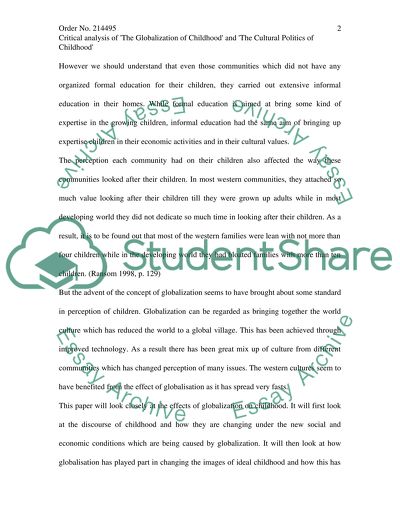Cite this document
(“The Globalisation of Childhood Essay Example | Topics and Well Written Essays - 2500 words”, n.d.)
The Globalisation of Childhood Essay Example | Topics and Well Written Essays - 2500 words. Retrieved from https://studentshare.org/sociology/1526720-the-globalisation-of-childhood
The Globalisation of Childhood Essay Example | Topics and Well Written Essays - 2500 words. Retrieved from https://studentshare.org/sociology/1526720-the-globalisation-of-childhood
(The Globalisation of Childhood Essay Example | Topics and Well Written Essays - 2500 Words)
The Globalisation of Childhood Essay Example | Topics and Well Written Essays - 2500 Words. https://studentshare.org/sociology/1526720-the-globalisation-of-childhood.
The Globalisation of Childhood Essay Example | Topics and Well Written Essays - 2500 Words. https://studentshare.org/sociology/1526720-the-globalisation-of-childhood.
“The Globalisation of Childhood Essay Example | Topics and Well Written Essays - 2500 Words”, n.d. https://studentshare.org/sociology/1526720-the-globalisation-of-childhood.


